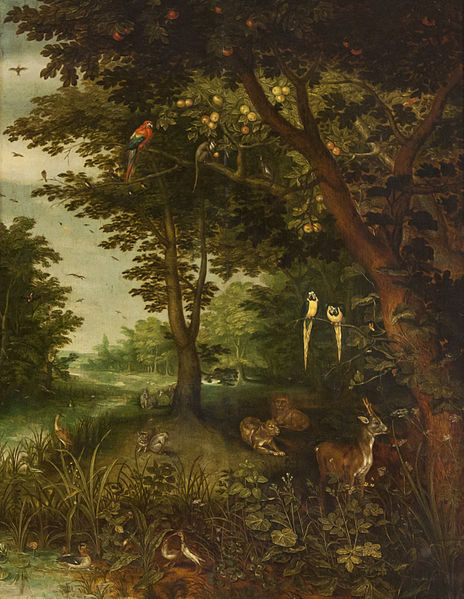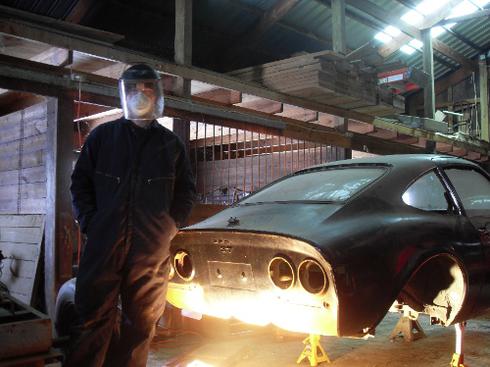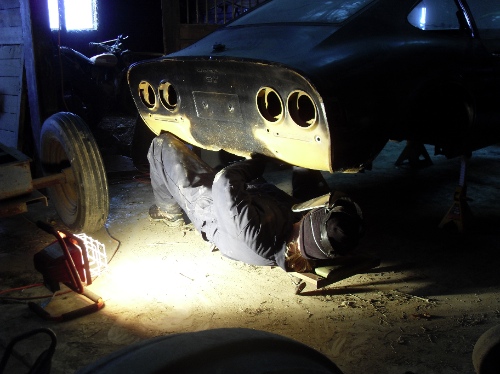
Being yourself. (image: Irish_Eyes)
I met Betty years ago when I moved to a place teeming with all sorts of progressive people. Still, Betty stood out. She was a large lady dressed in layers of brightly colored clothes who walked with the help of a carved walking stick. Because her eyesight was so poor she often asked for help reading street signs. I was the lucky person she asked one day.
We hit it off immediately, riffing on words and laughing wryly about politics. But when I made a banal comment (probably about the weather or something equally trite) Betty wanted none of it. She asked why I bothered to say it. While I was busy thinking about her question she moved on to far more fascinating topics. Her honestly was more overt than the huge pendant dangling around her neck. I admired her for it. I was newly married at 18, attending college full time, plus working and volunteering. Sometimes I felt as if I were playacting in all these unfamiliar roles. Simply by example Betty made it clear that playacting didn’t cut it.
Until her last days Betty was a fascinating woman. She could talk knowledgeably about religion, politics, and literature as well as motorcycle racing and vintage cars. She read avidly even though her poor eyesight forced her to hold a book inches away from her face. Known in the area as a white witch, she cast spells for many notable people and organizations. (Her attempts on behalf of the Cleveland Indians to lift the Curse of Rocky Colavito weren’t one of her successes.) In the early 2000’s the city of Lakewood asked her to clean up what they considered an overgrown yard. When an inspector showed up she walked him through her herb gardens, explaining what each plant could cure. Perhaps she was never cited for those unruly gardens because she gave him a homemade insomnia remedy.
The truly eccentric people I know don’t try to stand out. They don’t affect certain behaviors, clothes, or interests in order to be seen as non-conformists. They do their best to live in a world of conventions while simply being themselves.
We live in a marvelous time, when we’re far freer to be who we are than perhaps in any other time in history. That’s great for us as individuals but also great for humanity, since eccentrics seem to play a larger role than others in advancing exploration, the arts, and sciences. Their differences stretch the possibilities for all of us.
In Eccentrics: A Study of Sanity and Strangeness, psychiatrist David Weeks explains that eccentrics are physically healthier and significantly happier than “normal” people. He notes that eccentrics are wildly diverse yet share common characteristics. Here are his 25 descriptors of eccentricity, listed in descending order of importance. (Dr. Weeks says the first five are the most significant characteristics.)
- Enduring non-conformity
- Creativity
- Strongly motivated by an exceedingly powerful curiosity and related exploratory behavior
- An enduring and distinct feeling of differentness from others
- Idealism
- Happily obsessed with a number of long-lasting preoccupations (usually about five or six)
- Intelligent, in the upper fifteen per cent of the population on tests of intelligence
- Opinionated and outspoken, convinced of being right and that the rest of the of the world is out of step with them
- Non-competitive
- Not necessarily in need of reassurance or reinforcement from the rest of society
- Unusual eating habits and living arrangements
- Not particularly interested in the opinions or company of other people, except perhaps in order to persuade them to their contrary point of view
- Possessed of a mischievous sense of humor, charm, whimsy, and wit
- More frequently an eldest or an only child
- Eccentricity observed in at least 36% of detailed family histories, usually a grandparent, aunt, or uncle. (It should be noted that the family history method of estimating hereditary similarities and resemblances usually provides rather conservative estimates.)
- Eccentrics prefer to talk about their thoughts rather than their feelings. There is a frequent use of the psychological defense mechanisms of rationalization and intellectualization.
- Slightly abrasive
- Midlife changes in career or lifestyle
- Feelings of “invisibility” which means that they believe other people did not seem to hear them or see them, or take their ideas seriously
- Feel that others can only take them in small doses
- Feel that others have stolen, or would like to steal, their ideas. In some cases, this is well-founded.
- Dislike small talk or other apparently inconsequential conversation
- A degree of social awkwardness
- More likely to be single, separated, or divorced, or multiply separated or divorced
- A poor speller, in relation to their above average general intellectual functioning
See yourself here? A family member or friend?
The documentary “A Different Drummer” highlights people more overtly unusual than Betty. In fact, Dr. Weeks claims only one in 10,000 people are truly eccentric. I suspect the number is much higher.
Sure, some eccentrics are more flamboyant than others but I think the Bettys of the world qualify. So does a toddler obsessed with vacuums who grew into a little boy driven to fix broken appliances and equipment he rescued from the trash. So does a girl so fascinated by forensics that she spent weeks sketching the decomposition of a muskrat and recently assembled an entire deer skeleton in the driveway. So do many of the interesting people around all of us. My family tree is well leafed out with eccentrics and my friends are orchards of eccentricity. Maybe I’m eccentric too. How about you?

What gorilla suit? (image:Greyerbaby)

























 was being finalized, the editors allowed me to choose the photos that would appear every few pages. I delved into the stock photo world expecting to find a whole range of relevant images, such as kids exploring nature, engaged in make-believe, being silly, spending time with people of all ages, you know, being kids. Because the book’s topic is homeschooling and alternative education, I also wanted to avoid images of young people in instructional settings (indoors or out).
was being finalized, the editors allowed me to choose the photos that would appear every few pages. I delved into the stock photo world expecting to find a whole range of relevant images, such as kids exploring nature, engaged in make-believe, being silly, spending time with people of all ages, you know, being kids. Because the book’s topic is homeschooling and alternative education, I also wanted to avoid images of young people in instructional settings (indoors or out).







